Prague, the capital of the Czech Republic, is a popular European destination. With a varied history that dates back to the 8th century and a rich culture of Romanesque, Gothic, Bohemian, Austro-Hungarian, Slavic, and Soviet traditions, Prague captivates visitors. Its founding is shrouded in legend and prophecy; the 8th century Czech duchess ordered a castle built on a site overlooking the Vltava River and proclaimed that the city whose “glory will touch the stars.”
Table of Contents
History of Prague
Prague flourished from the 10th century onward, when it was a bishopric and the seat of the kings of Bohemia. The city was also an important trading centre, where merchants from across Europe settled, including a large Jewish population. In the 14th century, under Charles IV, Prague grew to be the third largest city in Europe, after Rome and Constantinople. He built the Charles Bridge, founded Charles University, and began construction on Saint Vitus Cathedral, in the courtyard of Prague Castle.
The 16th century brought the arts to Prague, when Emperor Rudolf II acquisitioned artists, alchemists, painters, poets, and others. Prague became a thriving capital of culture, but this did not last long. By the early 17th century, Prague was declining in both population and status. The Thirty Years War and an outbreak of plague decimated the city.
In the 18th century, the city grew once more, attracting nobility who built Baroque palaces, designed ornate gardens, and hosted lavish parties. In the 20th century, Prague was chosen as the seat of the capital of Czechoslovakia, bombed during the Second World War, and under Soviet control during the Cold War. In the 1990s, following the fall of the Soviet Union, Prague grew once again as a global financial power and cultural hub. Today, the city attracts visitors in droves. Highlights include Charles Bridge and Prague Castle, the John Lennon Wall, the Old Town Hall and Astronomical Clock, Wenceslas Square, and the Jewish Quarter, among others. Three days in Prague is a good amount of time to see the major highlights as well as explore a little further afield. Here are some ideas for a three day Prague itinerary!
How to spend 3 days in Prague
How to get to and from the Prague airport
There are several different ways to get into Prague from the airport, which is located 17km (25 minutes) from the city.
Public Bus
The first is by public bus, which is the cheapest yet can take more than an hour during rush hours. Bus 119 goes from the airport to the Nadrazi Veleslavin metro stop, at which time you must transfer to the A (green) line. Bus 100 takes riders to the Zlicin (yellow subway line B) metro station. This option is the cheapest, at €1.25 per person.
Airport Express
The Airport Express bus is slightly more expensive but takes riders from the airport to Praha Hlavni Nadrazi, Prague’s main station. An alternative to a public bus is a shuttle bus, which is smaller and drops passengers right at their hotel. These take anywhere from 30 to 60 minutes depending on the numbers of stops and cost €11.
Private Transfer with Welcome Pickups
Private options include Uber or a private car. Uber is quite popular though and is one of the better options for getting into the city. The downside to Uber is that it can be tough to get a car during rush hour and the price may increase during peak travel times. However, for the same price (or lower) of an Uber or a taxi, a private driver will meet you in the arrivals terminal with your name and a bottle of water. Welcome Pickups is a well-known, popular company with local, knowledgeable English-speaking drivers, who go through specific training in order to drive. We used Welcome Pickups during our three days in Prague and were quite happy with the service.
Click here for more information and to book your private transfer.
Alternatively, you might be interested in a shared shuttle transfer.
You might also be interested in this 2 – week Europe itinerary in winter that includes Prague.
3 days in Prague: Day One
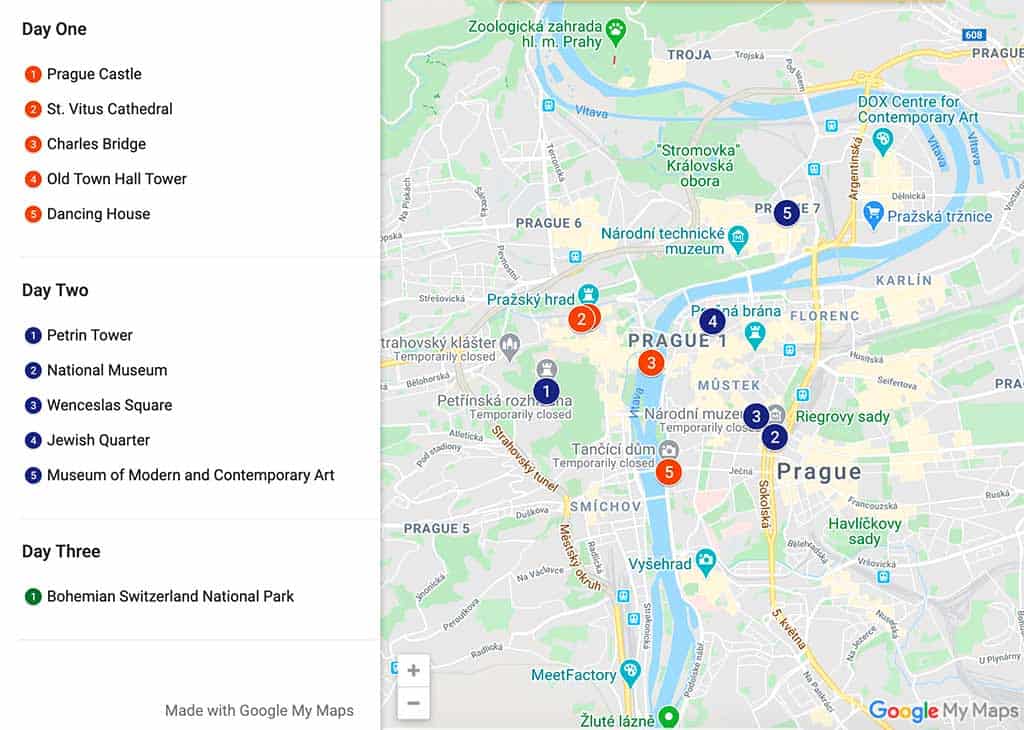
A great way to save money is a Prague City Card available for 2, 3 or 4-days. It includes free entrance to more than 50 attractions and 50% discounts on tours and shows.
Prague Castle and Saint Vitus Cathedral
Prague Castle sits high on a promontory overlooking the Vltava River, in a neighbourhood called Hradcany. It is a vast complex whose early buildings date back to the 9th century. The complex is made up of the castle, the Gothic Saint Vitus Cathedral, the Romanesque Basilica of St. George, and the Spanish Hall.
In addition, there are several museums in the complex, including the National Gallery collection of Baroque art. It is the largest castle in the world and attracts 1.8 million visitors annually.
Saint Vitus Cathedral sits within the Prague Castle complex. The current cathedral sits on the foundations of an early 10th century chapel and an 11th century Romanesque church, and it dates back to the mid-14th century, when the see of Prague was elevated to an archbishopric.
There were multiple architects involved in the design and construction of the building, which took hundreds of years to complete. Following a fire in the mid-16th century, the cathedral was left unfinished until the 20th century. It’s famous for its exceptional design and decoration, but the most well-known element is the Saint Wenceslas Chapel. The Cathedral still has regular church services. Tours of Prague Castle include a visit to the Cathedral.
Click here for more amazing viewpoints in Prague.
You might be interested in the this 2,5 hour guided castle tour that includes admission tickets.
Charles Bridge
Charles Bridge, also known as Karlov most in Czech, is a large stone bridge stretching across the Vltava River between the new and old towns. The bridge was built during Charles IV’s reign and it replaced the earlier 12th century Judith Bridge. It is lined with Baroque statues, although now all originals are located in the Lapidarium at the National Museum and the ones on the bridge are replicas.
The statues depict various saints who were revered during the time that the bridge was built. In its early years, the bridge was the only link between the old town and Prague Castle. It saw plenty of disasters, mostly floods, and was closed for renovations several times. From the late 1970s, the bridge has been pedestrian only. The best time to cross is in the morning, before the hawkers and artists set up their stalls and before the crowds, or late in the evening.
Old Town Hall Tower and the Astronomical Clock
Prague’s Old Town, which is across the river from Hradcany and Prague Castle, is the bustling visitor hub of the city. The large square at the heart of the old town is known as Old Town Square, and many visitors come to see the famous Astronomical Clock located in the Old Town Hall Tower.
The tower is the oldest part of the town hall, dating back to the mid-1300s, and was built in the Gothic style. Other features of the tower include a bay chapel and underground crypts. The Astronomical Clock delights watchers every hour from 9am to 11pm, when the twelve apostles appear on the hour. Tours of the Old Town Hall include a visit to the historical halls, the tower, and the underground areas.
Dancing House
The Dancing House is a modern building in Prague’s new town, and despite the fact that it is not as old as its surrounding buildings, it is still worth a visit. It was designed in 1992 by Croat-Czech architect Vlado Milunic in conjunction with Canadian-American architect Frank Gehry; the building was completed in 1996. The building is located along the river, on the site of a Baroque house destroyed by the US bombing in 1945.
It’s considered “deconstructivist” although others refer to it as Neo-Baroque and came from Milunic’s idea of his country transitioning from a communist regime to a parliamentary democracy. It has two main buildings, a main core that narrows at the “waist” and another, longer building parallel to the river. The windows are unaligned, and the entire building is kind of an optical illusion.
3 days in Prague: Day Two
On day two of your three day itinerary in Prague, continue to explore the city’s culture. We explored some of modern Prague, from the Petrin Tower to the Museum of Modern and Contemporary Art, but we also visited the historic Jewish Quarter.
Petrin Tower
The Petrin Tower is located on Petrin Hill, in Mala Strana. It is a 63 metre tall steel tower that resembles the Eiffel Tower. It’s a popular lookout point over the castle and river, and on a clear day visitors can see beyond Prague into the Bohemian hinterland.
The tower was built for the Jubilee Exhibition in 1891 after some Czech tourists saw the Eiffel Tower in Paris. Upon their return, they raised money to build the Petrin Tower, which is five times smaller than the Eiffel Tower. There are 299 steps to the top.
The National Museum
The National Museum was founded in 1818 by Count Kaspar Sternberg, a mineralogist and paleontologist who dedicated his entire collection to the museum.
During the first seventy years of its existence, the museum’s collections were housed in various churches and palaces, before finally being transferred to the new museum, which was built in the 1880s and opened in 1891.
The main building is location at Wenceslas Square in the — part of Prague. The museum collection comprises the five national museums: Natural History, History, Asian, African, and American Culture, Museum of Music, and the Library Museum with a Museum of Books exhibition, and these are scattered around the city.
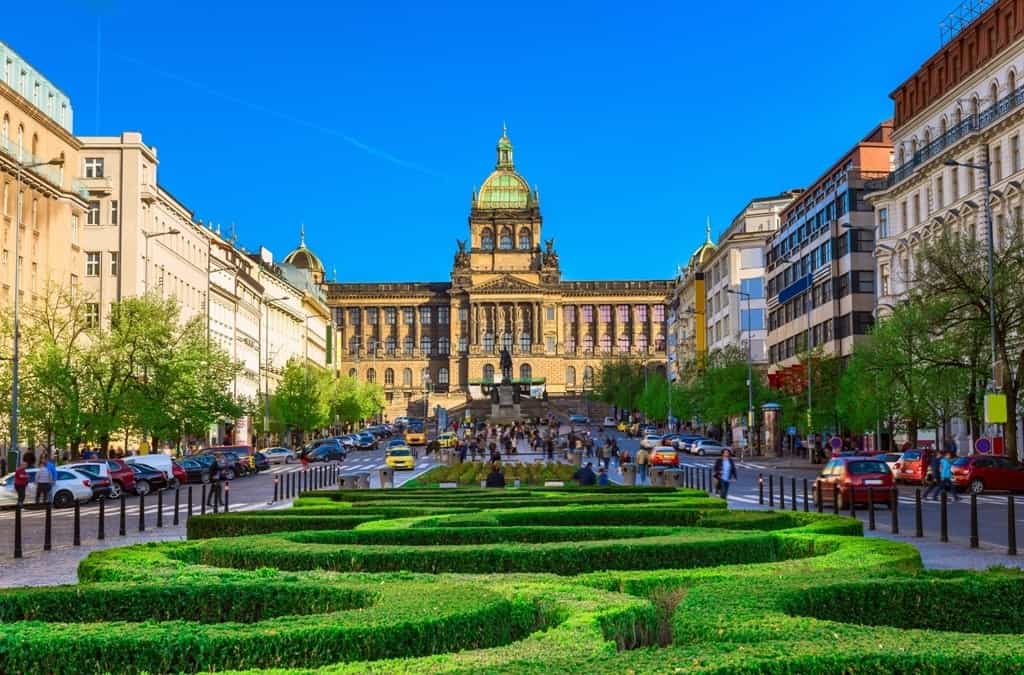
Wenceslas Square
Wenceslas Square is one of the main squares in Prague, the centre of the business and cultural activities in the Old Town, and the home of the National Museum. This is also where many political demonstrations took place over the years; specific ones include where Jan Palach set himself on fire in 1969 and where demonstrations were held during the 1989 Velvet Revolution. It is named for the patron saint of the Czech Republic. Today it is lined with restaurants, department stores, and hotels.
The Jewish Quarter
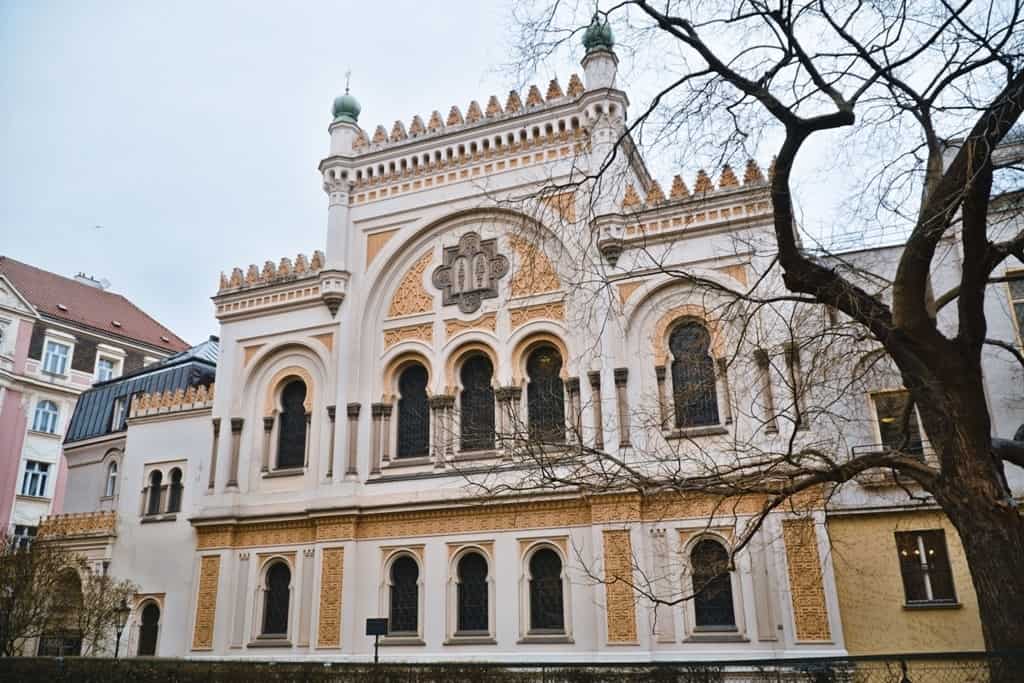
Prague’s Jewish Quarter, known as either the Jewish ghetto or Josefov, is located between the Old Town Square and the river. It dates to the 13th century, when Prague’s Jews were forced to move from their homes into one neighbourhood.
There are six synagogues within the quarter and one of the most important Jewish cemeteries in Europe. As centuries passed, Jews from Austria, Germany, and Spain also joined them.
Many of the significant historical buildings remain, despite some demolition in the area, and they are the best preserved complex of historical Jewish monuments and homes in Europe. Hitler himself decided to keep the neighbourhood to preserve it as a museum of an extinct race.
Museum of Modern and Contemporary Art
The National Museum of Modern and Contemporary Art is housed at Veletrzni Palace, on the north side of the river.
It showcases an exemplary collection of 19th-21st century Czech and European art. Prague’s connection to modernist and functionalist art is strong; artists such as Le Corbusier, Walter Gropius, and Paul Klee all visited and lectured here.
The massive, four-storey building was damaged by fire in 1951, painstakingly restored, and now houses important works by Van Gogh, Gauguin, Kupka, and others. The ground floor highlights up and coming artists.
Eating Prague Food Tour
In the afternoon of day 2 we did a food tour hosted by Eating Europe. This small group tour showed us a lesser-known side of Prague. We went down narrow streets to visit family-owned restaurants and wine bars, tasted local beers and locally cured meats and cheeses, and saw street art like David Cerny’s statues, and the Kampa Island.
One of the things we enjoyed learning about was Czech wine, and how popular it is – yet so unknown outside of the country. We tasted exquisite wines, all of which you can’t buy anywhere else. We also tried regional favourites, like goulash (Hungarian) and absinthe. The tour was fantastic and I highly recommend it.
Read more about our food tour in Prague here.
3 days in Prague: Day Three
Bohemian Switzerland National Park day trip
On our third day in Prague, we took a hike. Getting out of the city is very easy and the tranquility of the surrounding countryside is a breath of fresh air from the bustle of Prague. With three days in Prague, visitors have time to explore some of Central Bohemia without feeling rushed.
Our hike was hosted by Northern Hikes. It was an easy hike that included a boat ride along the Kamenice River and a visit to the Bastei Bridge, which is a famous bridge across sandstone mountains. The tour visits the Saxon-Bohemian Switzerland National Park, which straddles the border between the Czech Republic and Germany. It is just an hour and forty minutes from Prague, yet it feels a world away.
We began with a boat tour of the Kamenice River, then dined at a riverside restaurant on fresh trout and local dishes. From there, we reboarded our luxury minivan and went to where the Kamenice River flows into the Elbe. Here, among the rugged mountains, lies the impressive Bastei Bridge and Neurathen medieval fortress ruins. The tours gives participants time to explore this area and visit the many lookout points from which you can see the rivers and mountains, and marvel at the outstanding natural beauty of Central Europe.
Read more about our day trip to the Bohemian Switzerland National Park here.
If you are looking for an alternative day trip from Prague I suggest the nearby town of Kutna Hora, an UNESCO World Heritage site. You can read more on what to do in Kutna Hora and how to get there from Prague here.
Where to Stay in Prague
Hotel Klarov
Prague, Czech Republic has plenty of accommodation options, from hostels to five star hotels. We stayed at Hotel Klarov, a boutique four-star hotel in Mala Strana. This lovely hotel ,housed in a former Baroque mansion, is central to all of the city’s major attractions yet on a small street that doesn’t feel crowded or overwhelming. With just 25 bedrooms, the Baroque hotel is exclusive, yet welcoming and warm. Rooms are inspired by musicians who have performed in Prague over the last 25 years, from the Rolling Stones to Beyonce. They are modern and luxurious, offering guests plenty of space and great views of the city or castle. Breakfast is included and is served in either the restaurant or garden terrace.
Read more about my stay at the Hotel Klarov here.
Prague is a wonderful city, well worth spending time in. I really enjoyed my time in Prague and felt that I learned so much and saw an incredible amount of the culture and history. I recommend that visitors spend at least three days in Prague, as there is a lot to do, and be sure to add a day to explore outside of the city or further afield in Central Bohemia. This three day Prague itinerary highlights the best of the city’s attractions, from the historic Prague Castle to the incredible astronomical clock and the modern side of Czech art.
Check out this wonderful video my friend Todd made from our 3-day trip to Prague!
Note: Prague is extremelly crowded during the summer, a lot of the photos on the post were taken early in the morning.

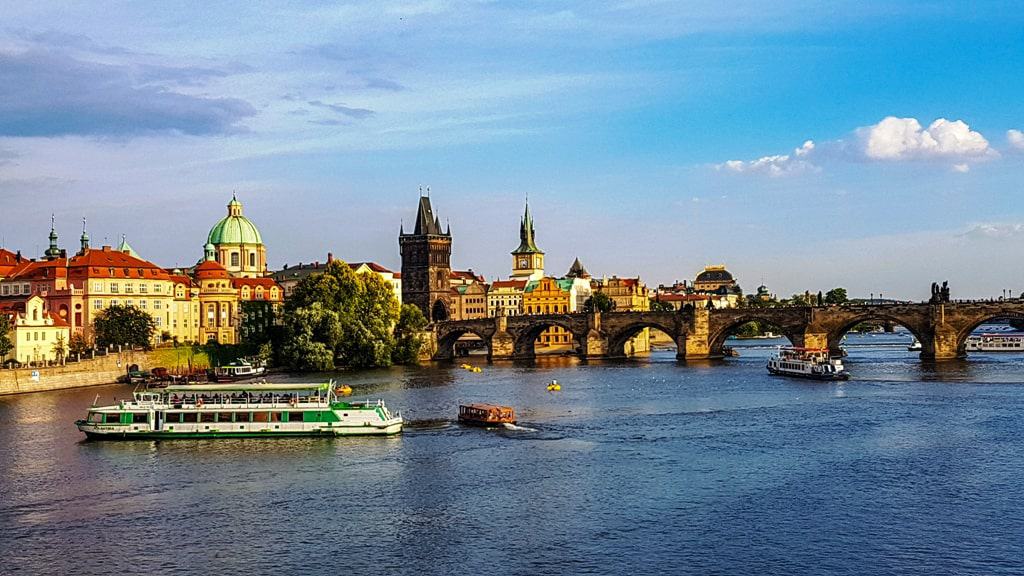
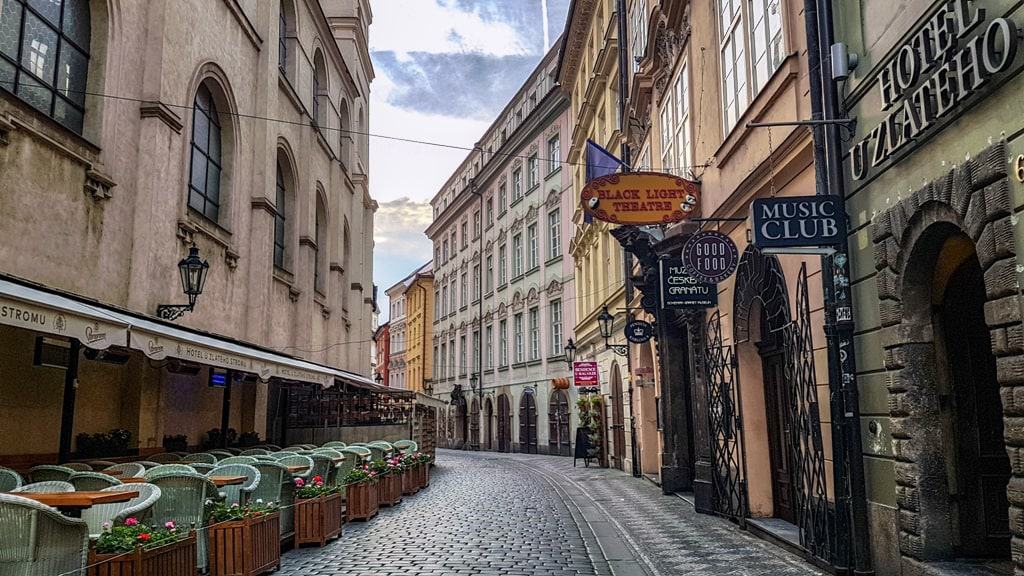
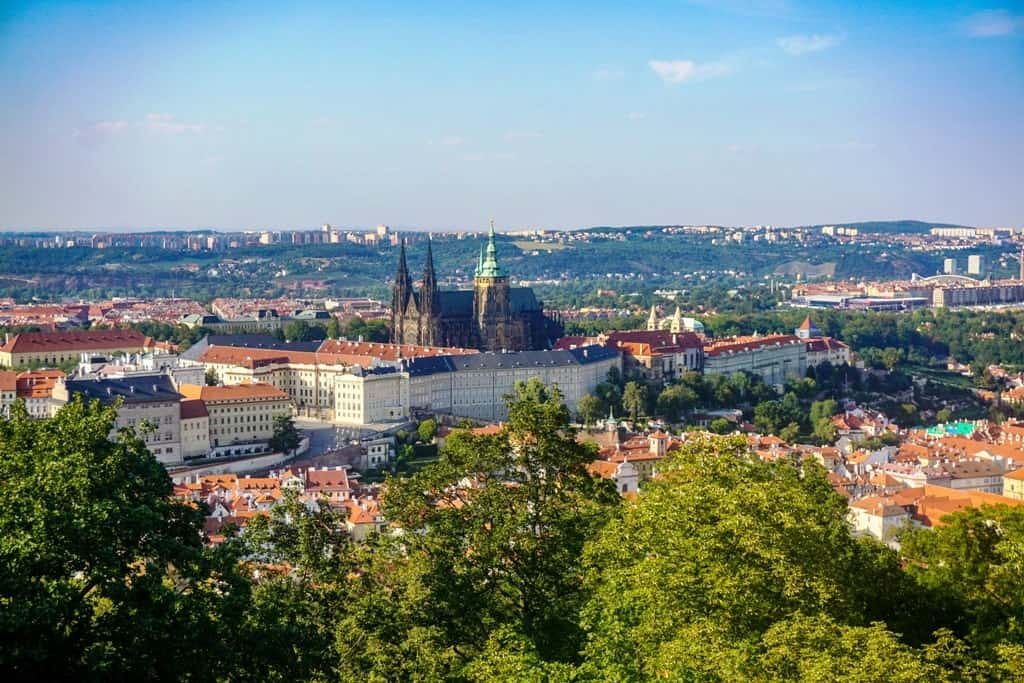
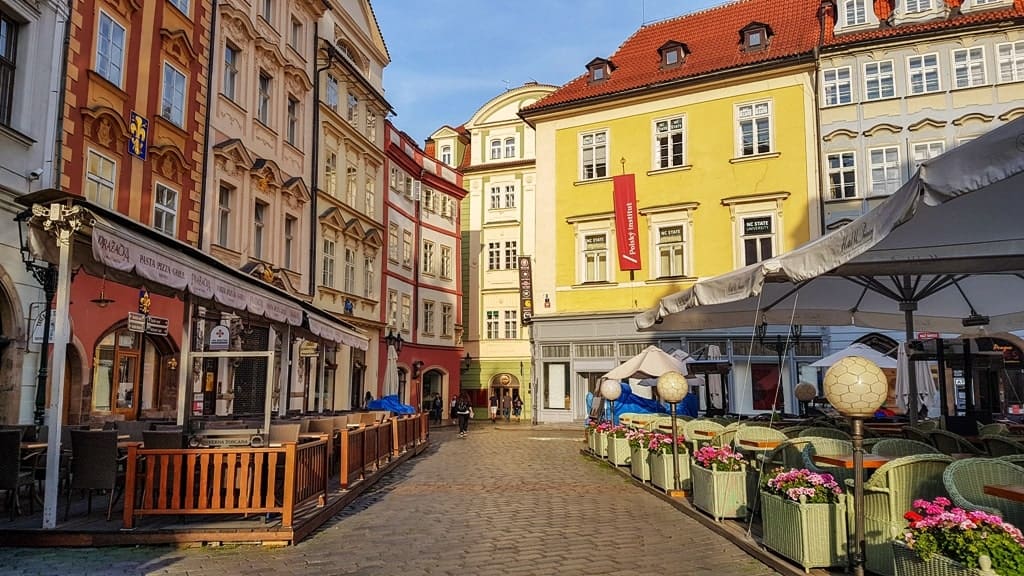
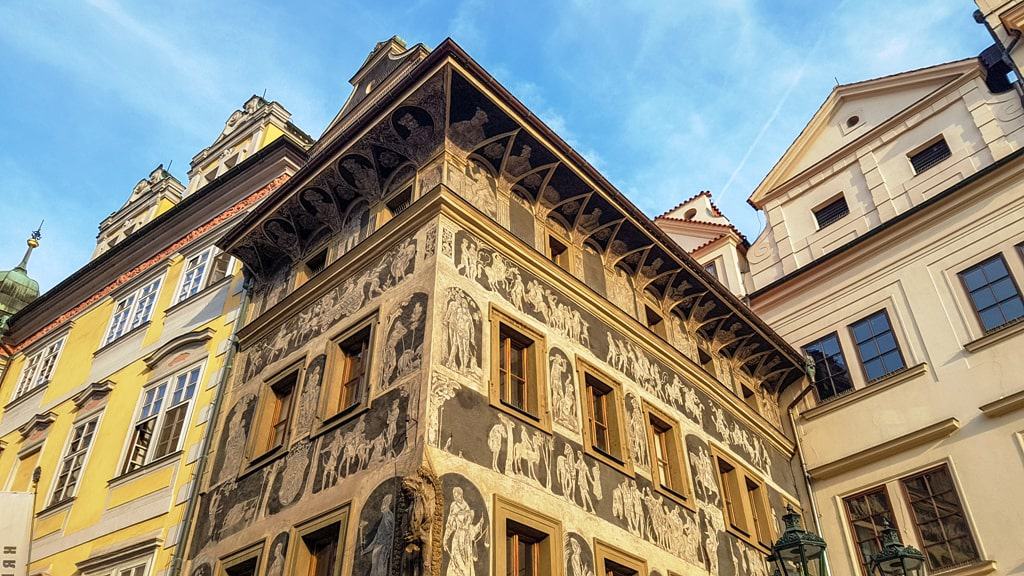
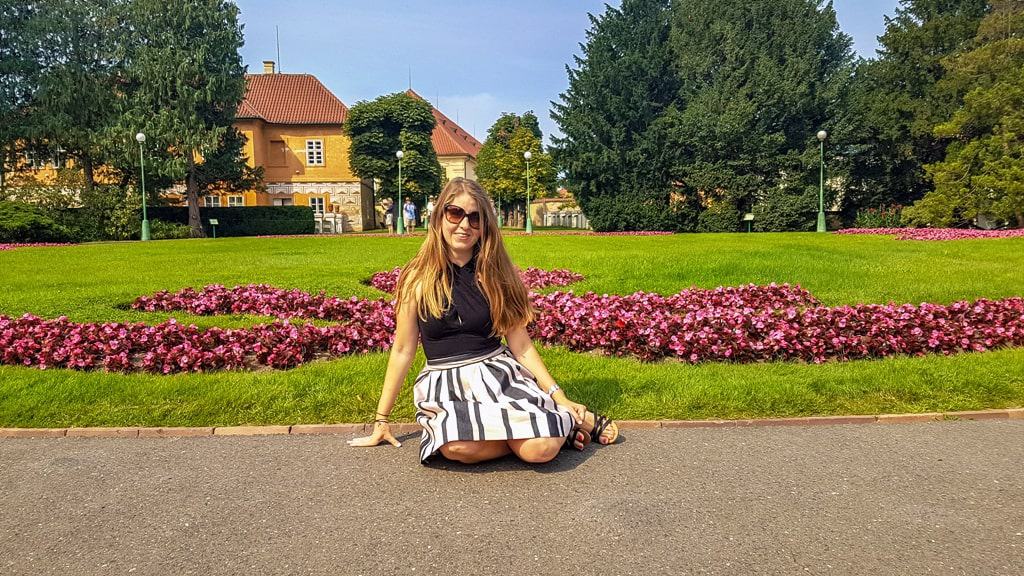
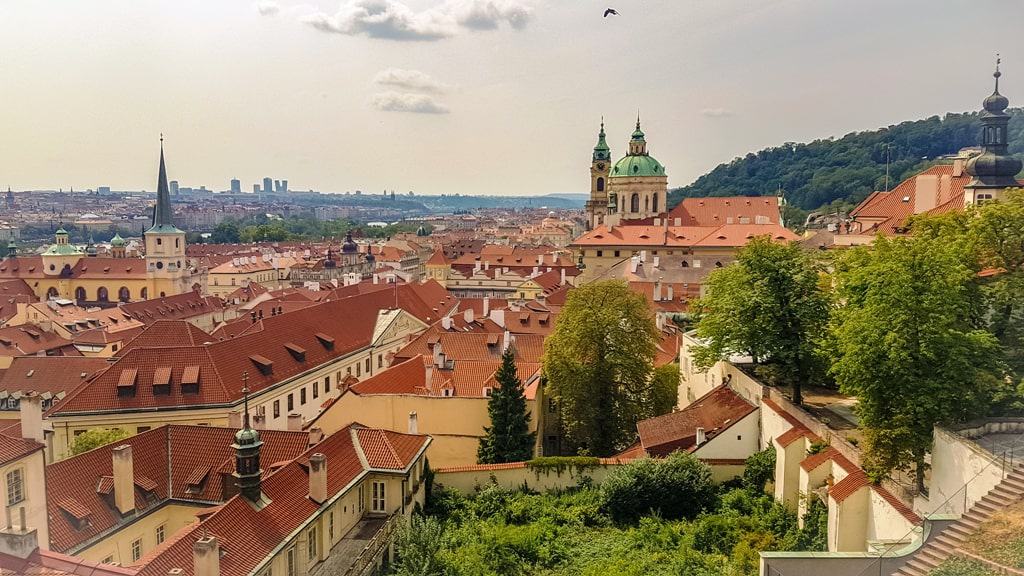

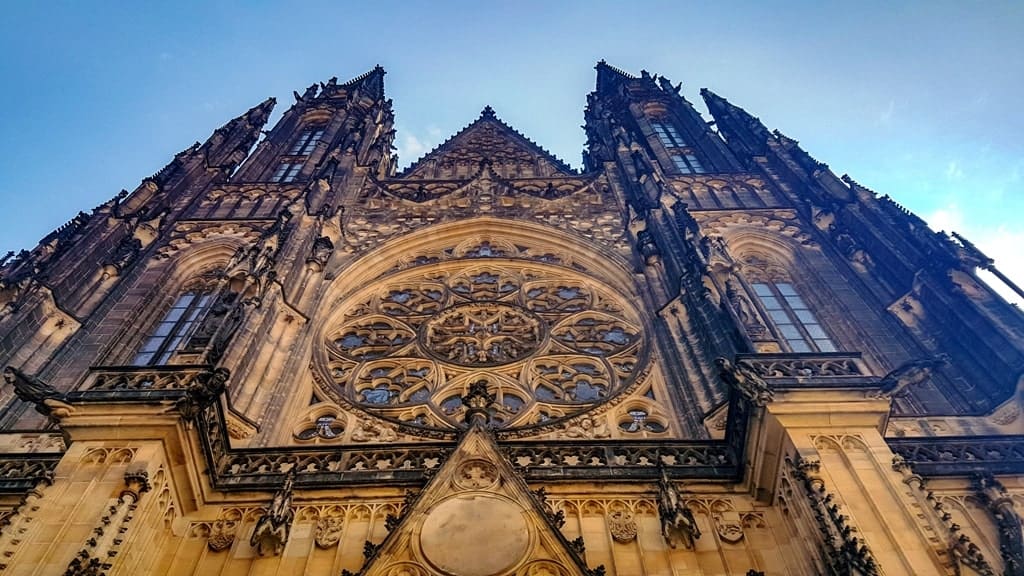
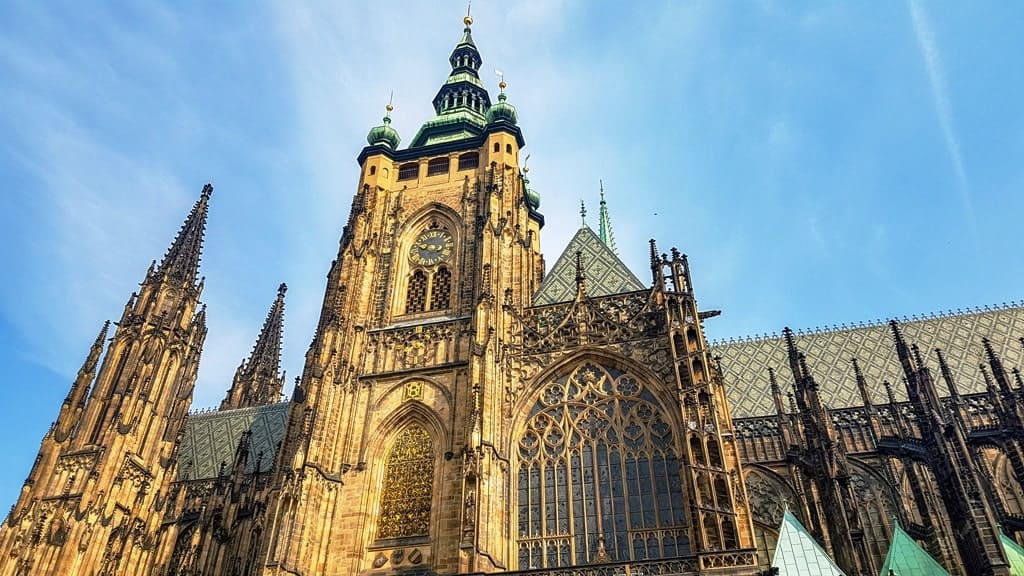
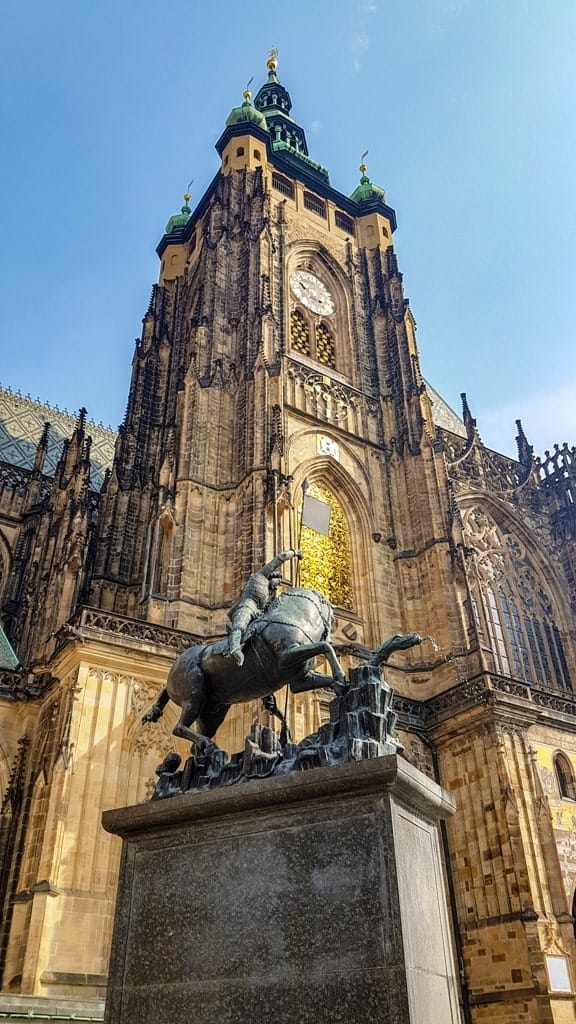
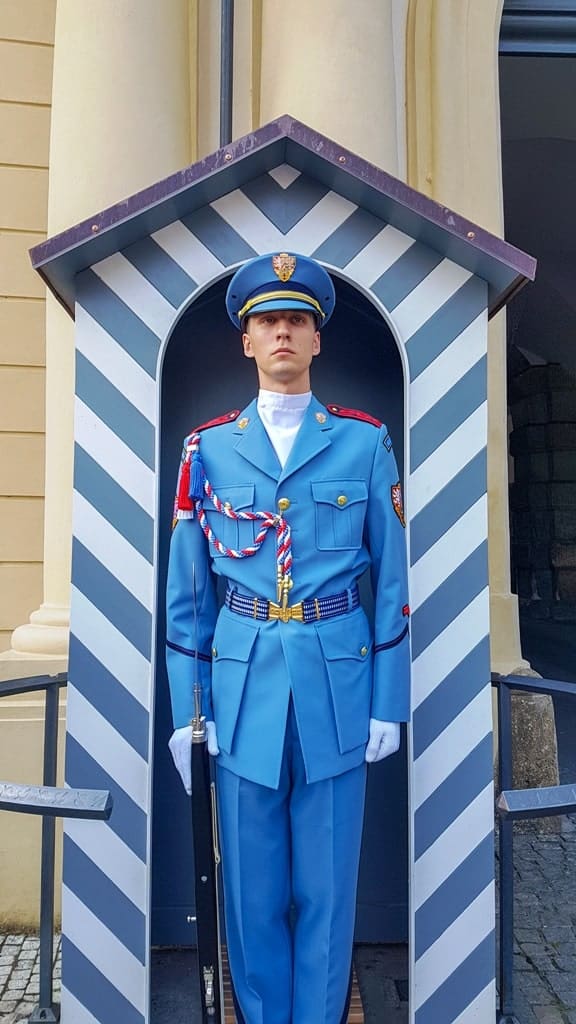
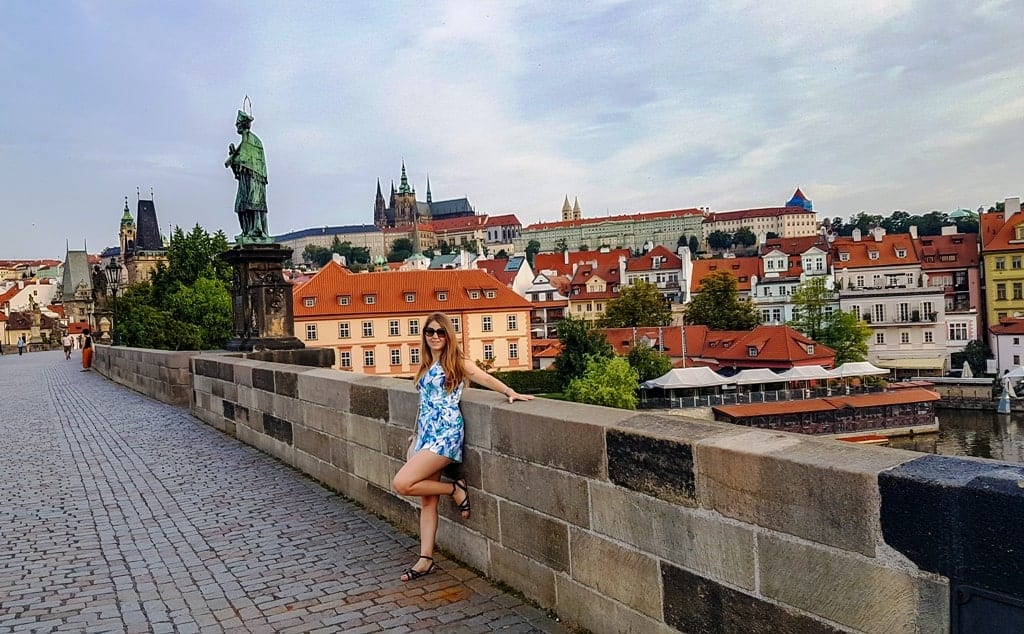
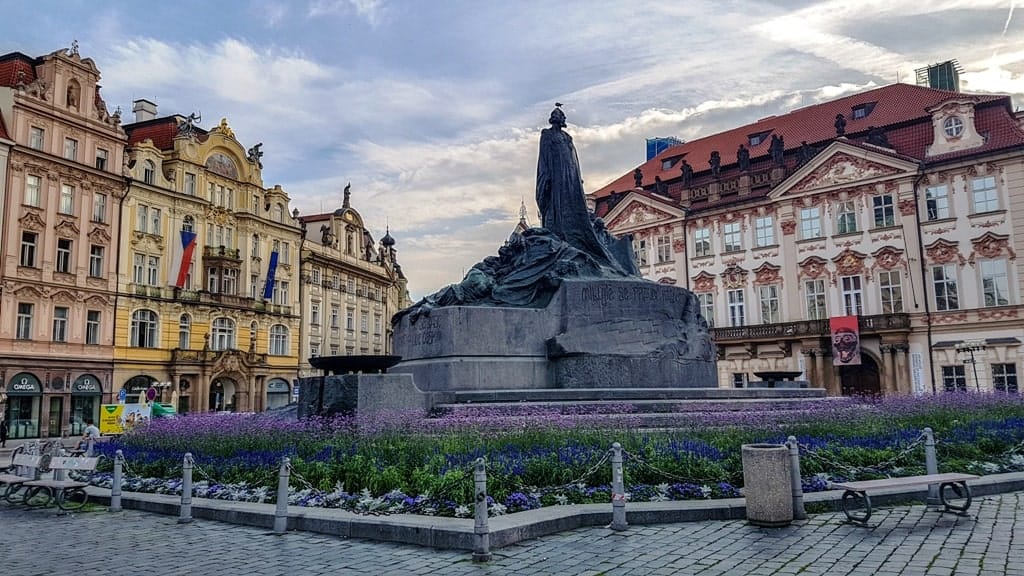
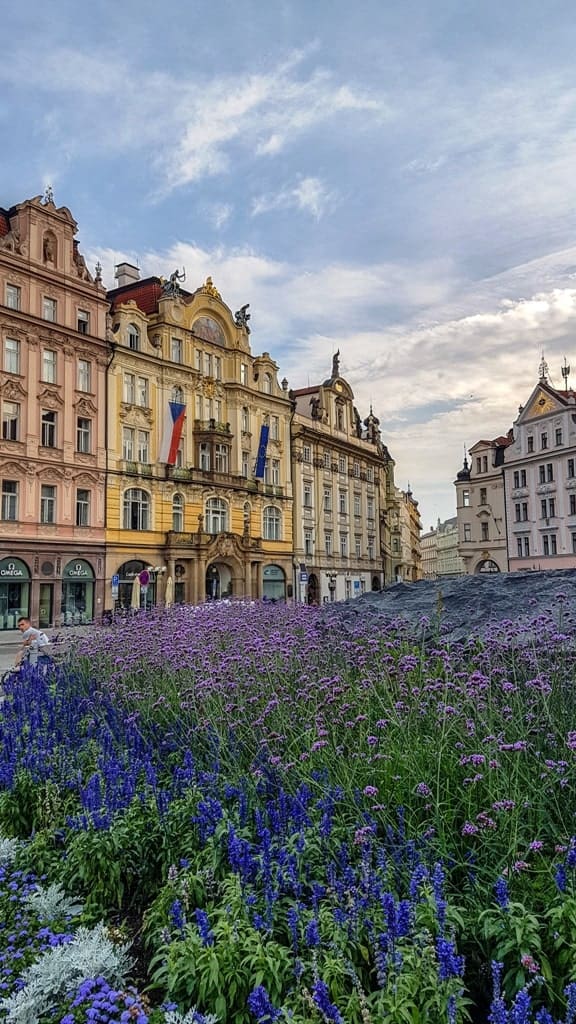
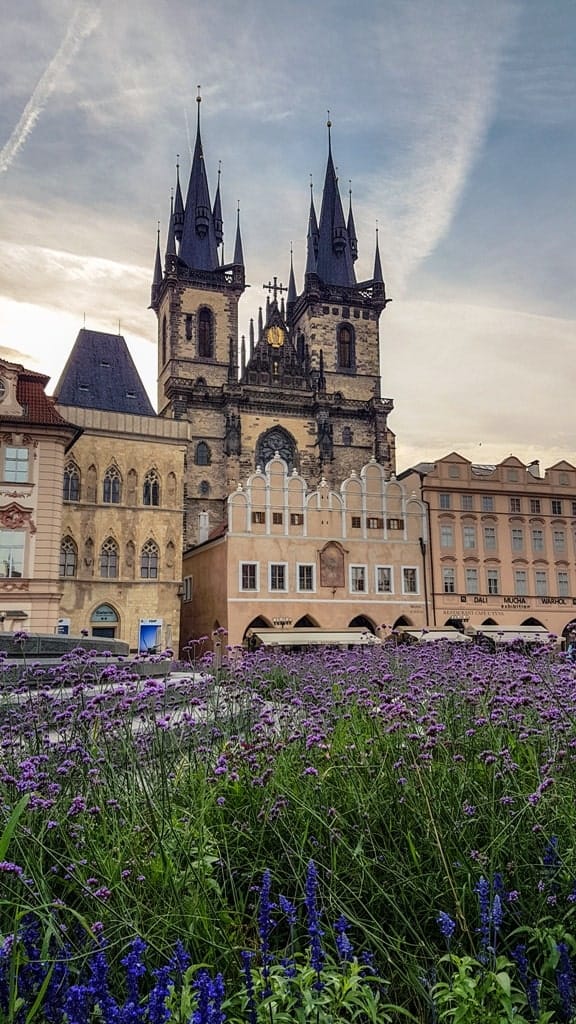
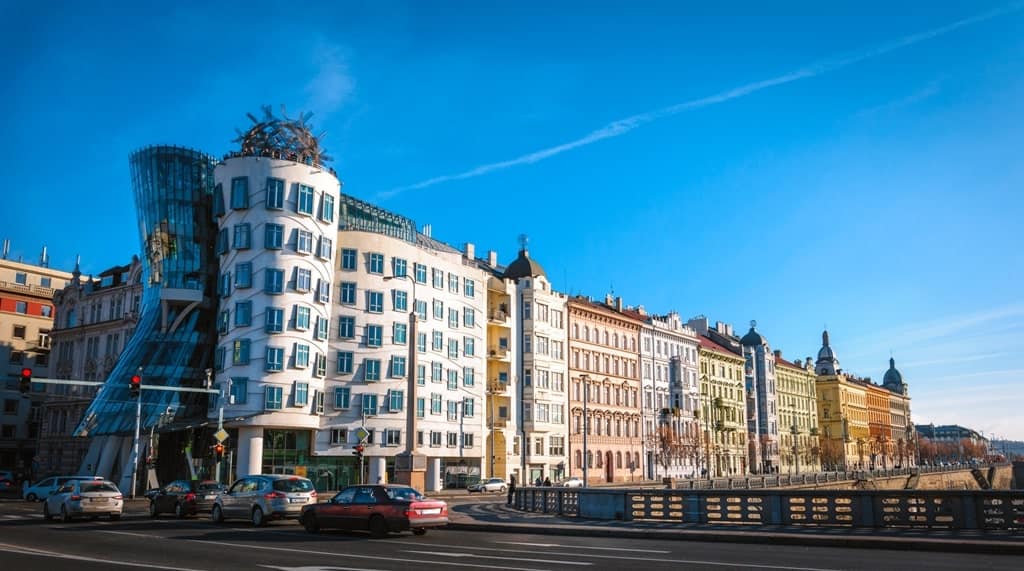
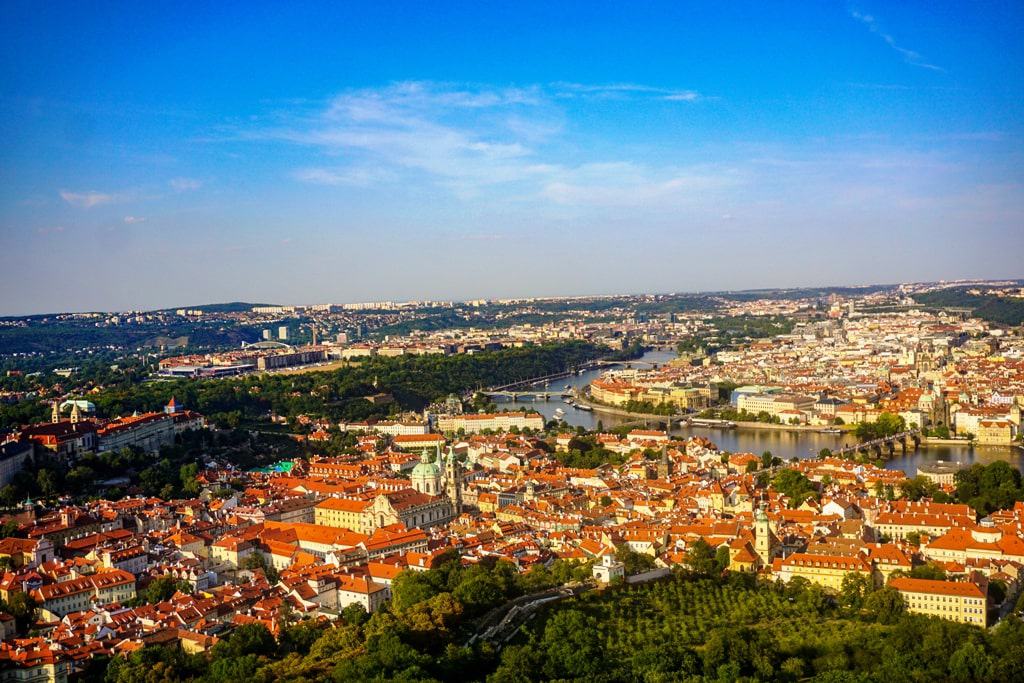
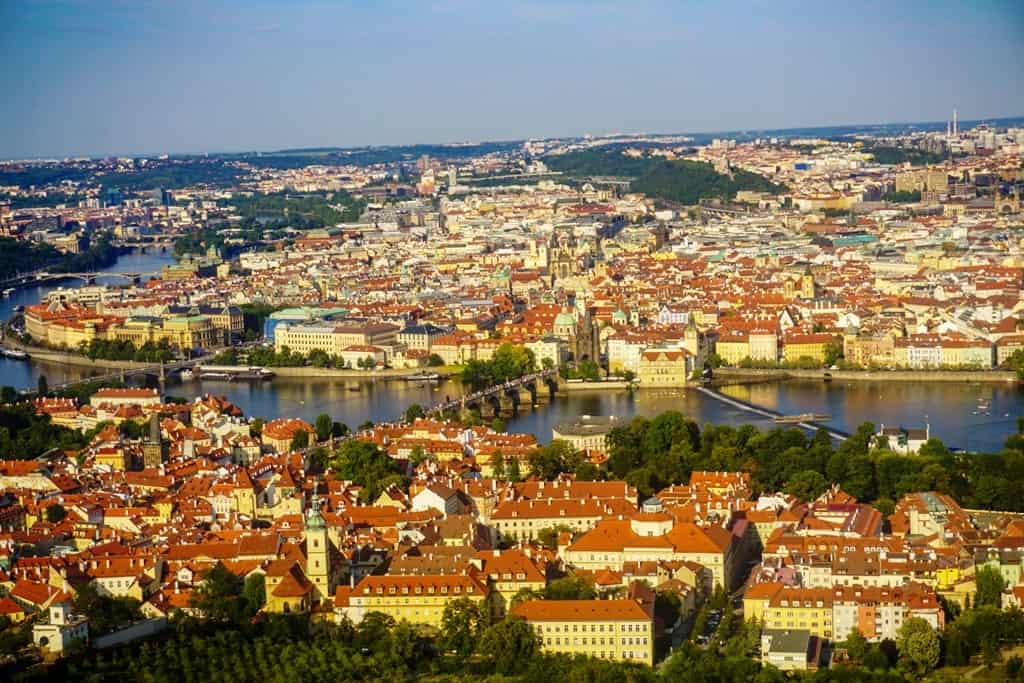
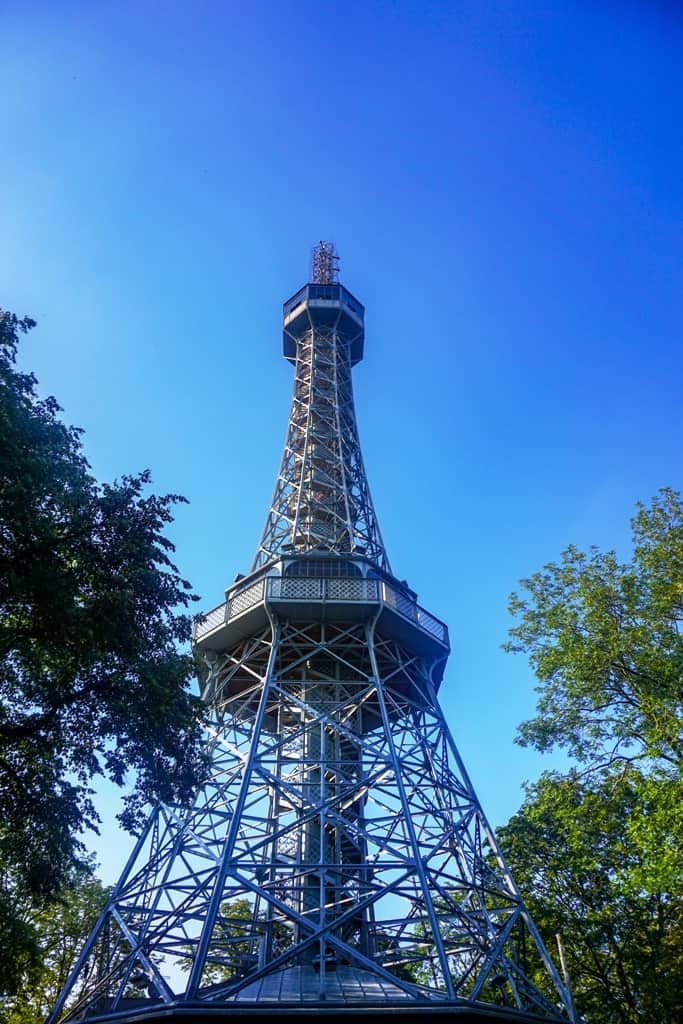
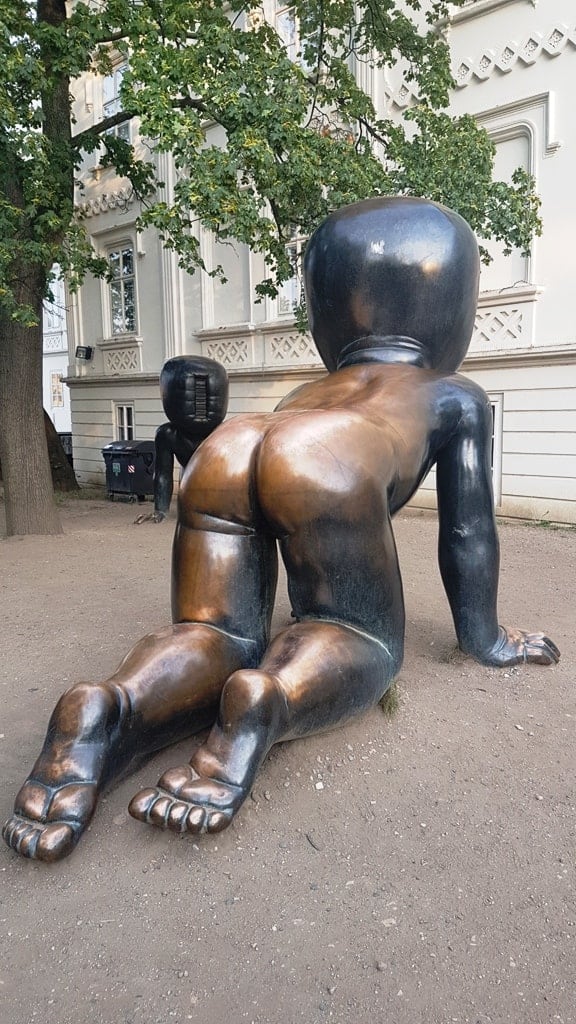
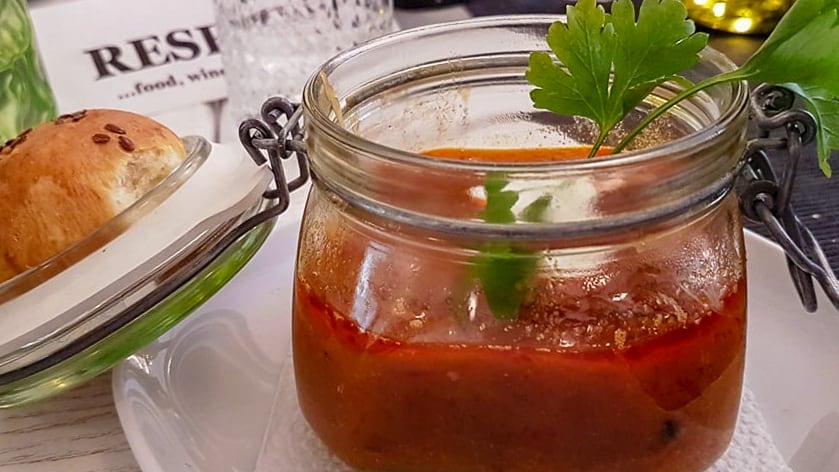

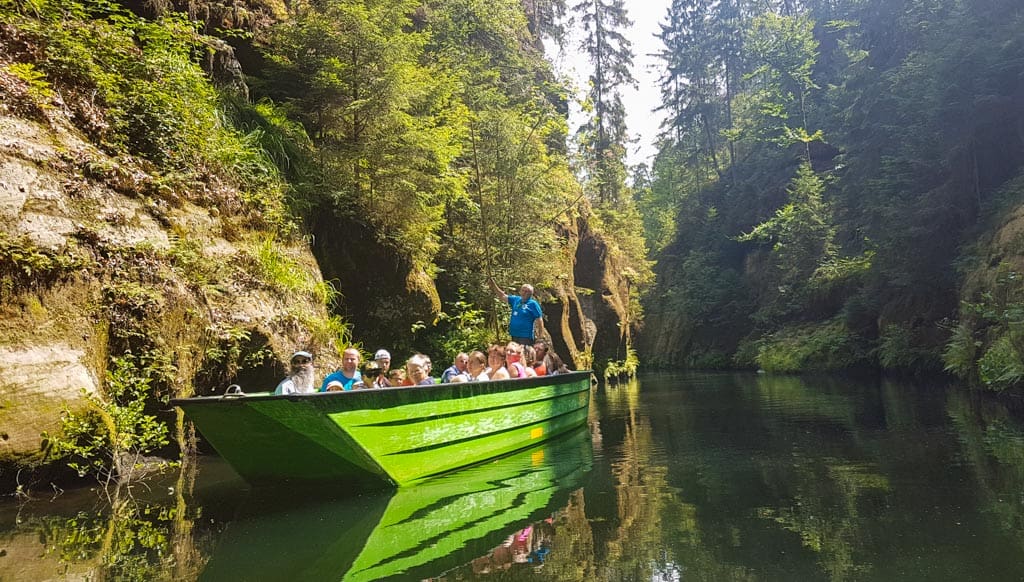
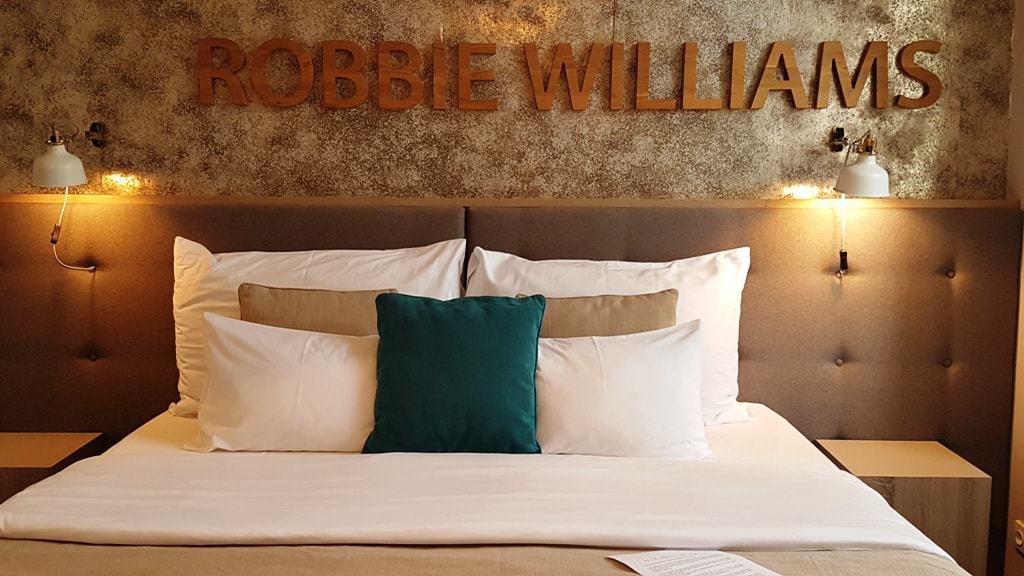
We stayed in Hotel Rott, because of all the places to stay, this one is probably the closest to the actual tourist centre. Just within a few meters.